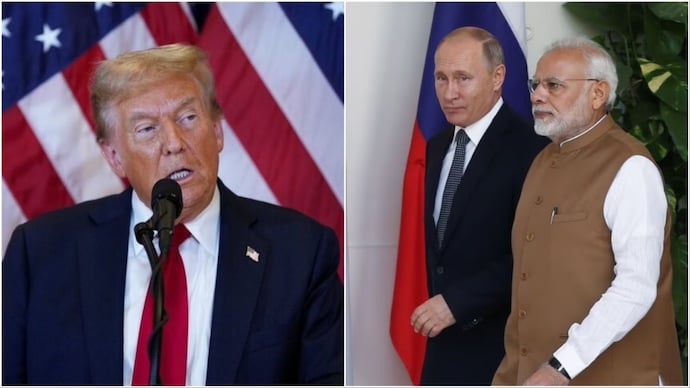The United States has warned that it may impose additional secondary tariffs on India if upcoming peace talks between former President Donald Trump and Russian President Vladimir Putin fail to yield progress on ending the war in Ukraine.
The high-stakes summit is scheduled for August 15 in Anchorage, Alaska, and is being viewed globally as a litmus test for Washington’s new pressure strategy to curtail Russian oil revenues through indirect economic coercion.
Speaking on Wednesday, U.S. Treasury Secretary Scott Bessent issued a pointed statement indicating that if diplomacy fails, India and potentially other countries importing Russian oil will face sharper trade penalties.
“We have a 50% tariff scheduled, and if diplomacy doesn’t deliver, that number could go higher,” Bessent said at a briefing in Brussels. “This is about stopping Putin’s war machine. And to our European allies, I say: it’s put up or shut up time.”
Background: Tariffs Amid Tensions
The U.S. has already imposed a two-tier tariff on Indian exports:
25% reciprocal tariff, citing trade imbalances; 25% penalty tariff, for continuing to buy discounted Russian crude.
Combined, these 50% duties are set to take effect on August 27 under a controversial executive order signed by Trump earlier this month.
The sanctions are part of a broader U.S. campaign to squeeze Russian oil revenues and punish nations indirectly supporting Moscow’s war in Ukraine through energy trade.
India is currently the largest non-European buyer of Russian crude oil. While it defends its imports as a matter of national interest and economic necessity, Washington sees them as undermining sanctions aimed at ending the war.
India Responds: “Unfair, Unjustified, Unreasonable”
New Delhi has strongly criticized the tariff escalation. In a statement last week, the Ministry of External Affairs (MEA) called the U.S. actions:
“Unfair, unjustified and unreasonable… India’s sovereign energy decisions cannot be dictated by third parties.”
Prime Minister Narendra Modi echoed these sentiments, saying in Parliament that India will not compromise on core sectors like agriculture, dairy, and fisheries, even if that means weathering the economic fallout.
“We will not kneel. Not in trade, not in foreign policy. We are prepared to pay the price for our independence,” Modi said.
Economic Fallout Looms
Analysts warn that the tariffs could have a devastating impact on Indian exports, which are heavily dependent on the U.S. market. According to ICRIER, a leading Indian think tank, up to 70% of India’s exports could be impacted by the 50% tariff structure.
Key vulnerable sectors include Textiles and apparel, Pharmaceuticals, Gems and jewellery, Auto parts and electronics
Indian industry groups have begun lobbying for relief, while New Delhi weighs possible retaliatory tariffs or efforts to reroute exports to other regions.
“This could mark a turning point in U.S.-India trade relations,” said Prof. Rakesh Mohan of the Centre for Policy Research. “The strategic fallout might be even more significant than the economic one.”
The threat of expanded secondary sanctions is also being seen as a test case for other Russian oil buyers—especially China, Turkey, and several Southeast Asian nations. While India has borne the brunt of Trump’s ire, Europe has largely avoided penalties, sparking accusations of a double standard.
In Brussels, Bessent urged the European Union to join the sanctions regime, warning of reputational consequences if they do not act.
“We can’t win this war with just words. If you’re not willing to sanction, don’t pretend to care about Ukraine,” he said.
Whether the tariffs move forward will largely depend on the outcome of the Trump–Putin summit on August 15. The closed-door talks are expected to focus on:
A possible ceasefire in Ukraine
Russian oil export limitations
Sanctions coordination among Western allies
Sources familiar with the preparations say Trump views the summit as a “make-or-break” moment for his post-presidency foreign policy legacy—and hopes to broker what he calls the “Deal of the Century.”
As geopolitical tensions mount and economic risks deepen, the U.S.-India relationship faces one of its most serious challenges in decades. With diplomacy hanging in the balance, the outcome of this week’s Alaska summit may decide not just the fate of global energy markets—but the future of a fragile strategic partnership.








